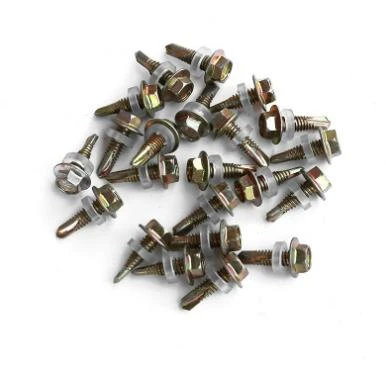

self tapping screws for ductwork
Dec . 04, 2024 04:59 Back to list
self tapping screws for ductwork
Self-Tapping Screws for Ductwork A Comprehensive Guide
In the world of HVAC (Heating, Ventilation, and Air Conditioning), properly installing ductwork is crucial for maintaining efficient airflow, temperature control, and overall system performance. Among the many tools and fasteners available for duct installation, self-tapping screws have emerged as essential components, providing reliability and ease of use. This article delves into the importance of self-tapping screws for ductwork, their advantages, and tips for effective application.
What Are Self-Tapping Screws?
Self-tapping screws are specialized fasteners designed to create their own hole as they are driven into various materials. Unlike standard screws, which require a pre-drilled hole, self-tapping screws have unique pointed tips and threads that enable them to cut into the material directly. This feature makes them particularly useful when installing ductwork, where time and efficiency are often critical.
Advantages of Using Self-Tapping Screws in Ductwork
1. Time Efficiency The self-drilling nature of these screws eliminates the need for pre-drilling holes. This not only saves time during installation but also reduces the number of tools required on-site, making the process more streamlined.
2. Stronger Connections Self-tapping screws create a tight, secure fit that is ideal for ductwork. Their threading locks into the material, minimizing the risk of loose connections that could lead to leaks or inefficiencies in the HVAC system.
3. Versatility These screws can be used on a variety of materials commonly found in ductwork, such as sheet metal, plastic, and even wood in some cases. This versatility makes them a go-to solution for many HVAC professionals.
4. Corrosion Resistance Many self-tapping screws are available with coatings (such as zinc plating) that enhance their corrosion resistance. This is particularly important in HVAC applications where moisture and temperature fluctuations can lead to rust and decay.
self tapping screws for ductwork

5. Cost-Effectiveness Although self-tapping screws might be slightly more expensive than traditional screws, their ease of use and durability often result in lower overall project costs. Fewer failures and less need for maintenance lead to long-term savings.
Best Practices for Using Self-Tapping Screws in Ductwork
1. Choosing the Right Size and Type It’s essential to select self-tapping screws that are appropriate for the thickness and type of material being used. Common sizes for ductwork screws range from 8 to 10, with lengths varying according to the application.
2. Pre-Determining Torque Settings When using power tools to drive the screws, adjust the torque settings appropriately to avoid stripping the screw or damaging the duct material. Too much torque can lead to a weakened joint.
3. Using the Right Tools A quality electric drill or impact driver will yield the best results. Ensure the screwdriver bit matches the screw head (commonly Phillips or square drive) to avoid cam-out and strip the screw.
4. Ensure Proper Alignment When fastening duct sections together, ensure that they are well aligned before driving the screws. Misalignment can cause airflow issues and increased energy consumption.
5. Regular Inspections After installation, it’s wise to periodically inspect the ductwork for any signs of wear or loose screws. Addressing these issues promptly can prevent more significant problems down the line.
Conclusion
Self-tapping screws are an invaluable tool for HVAC professionals engaged in ductwork installation. Their unique design and numerous advantages create a reliable method for ensuring that duct systems are secure and efficient. By adopting best practices and selecting the right screws for specific applications, contractors can not only enhance the quality of their work but also improve the overall performance of HVAC systems. In a field where precision and reliability are paramount, self-tapping screws stand out as a fundamental choice for effective ductwork solutions. As the industry continues to evolve, these fasteners remain a steadfast element in building a comfortable and efficient indoor environment.
Latest news
-
Hot Dip Galvanized Bolts-About LongZe|High Strength, Corrosion Resistance
NewsJul.30,2025
-
High-Strength Hot Dip Galvanized Bolts - Hebei Longze | Corrosion Resistance, Customization
NewsJul.30,2025
-
Hot Dip Galvanized Bolts-Hebei Longze|Corrosion Resistance&High Strength
NewsJul.30,2025
-
High-Strength Hot-Dip Galvanized Bolts-Hebei Longze|Corrosion Resistance&High Strength
NewsJul.30,2025
-
Hot Dip Galvanized Bolts-Hebei Longze|Corrosion Resistance&High Strength
NewsJul.30,2025
-
Hot Dip Galvanized Bolts - Hebei Longze | Corrosion Resistance, High Strength
NewsJul.30,2025

